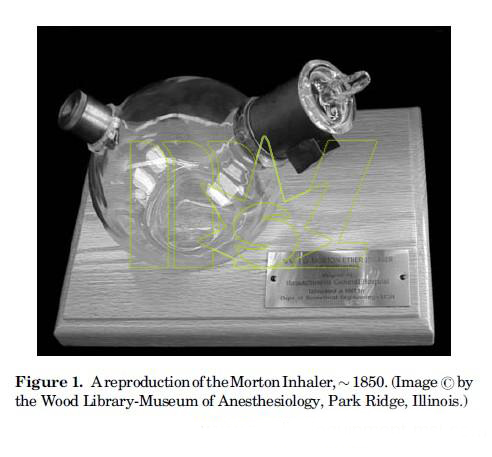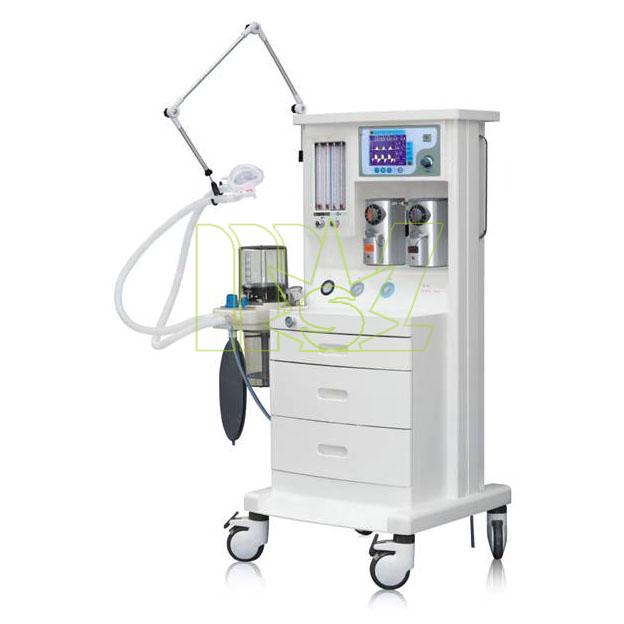On October 16, 1846, W. T. G. Morton gave the first successful public demonstration of inhalational anesthesia. Using a hastily devised glass reservoir to deliver diethyl ether, he anesthetized a patient before an audience at the Massachusetts General Hospital (Fig. 1). This glass reservoir thus became the first, crude, anesthesia machine. The technology of anesthesia machines has advanced immeasurably in the ensuing 150 years. Modern anesthesia machines are used to administer inhalational anesthesia safely and precisely to patients of any age, in any state of health, for any duration of time, and in a wide range of operating environments.

The term anesthesia machine colloquially refers to all of the medical equipment used to deliver inhalational anesthesia. Inhalational anesthetics are gases that, when inhaled, produce a state of general anesthesia, a drug-induced reversible loss of consciousness during which the patient is not arousable, even in response to painful stimulation. Inhalational anesthetics are supplied as either compressed gases (e.g., nitrous oxide), or volatile liquids (e.g., diethyl ether, sevoflurane anesthesia, halothane anesthesia or desflurane). In recent years, the anesthesia machine has been renamed the anesthesia delivery system, or anesthesia workstation because modern devices do more than simply deliver inhalational anesthesia. Defined precisely, the term ‘‘anesthesia machine’’ specifically refers to that component of the anesthesia delivery system that precisely mixes the compressed and vaporized gases that are inhaled to produce anesthesia. Other components of the anesthesia delivery system include the ventilator, breathing circuit, and waste gas scavenger system. Anesthesia workstations are anesthesia delivery systems that also incorporate patient monitoring and information management functions.
The most obvious goals of general anesthesia are to render a patient unaware and insensible to pain so that surgery or other medically necessary procedures can be performed. In the process of achieving these goals, potent medications are administered that interfere with normal body functions, most notably circulation of blood and the ability to breathe (see the text box Typical Process of Delivering General Anesthesia). The most important goal of anesthesia care is therefore to keep the patient safe and free from injury. Patient safety is a major principle guiding the design of the anesthesia workstation. Precise control of the dose of anesthetic gases and vapors reduces the risk of administering an overdose. The ventilator and breathing circuit are fundamental components of the anesthesia delivery system designed to allow for continuous delivery of oxygen to the lungs and removal of exhaled gases. To fulfill national and international standards, anesthesia delivery systems must have essential safety features and meet specified minimum performance criteria.




 Price is 8-20% Lower Than Other
Price is 8-20% Lower Than Other







